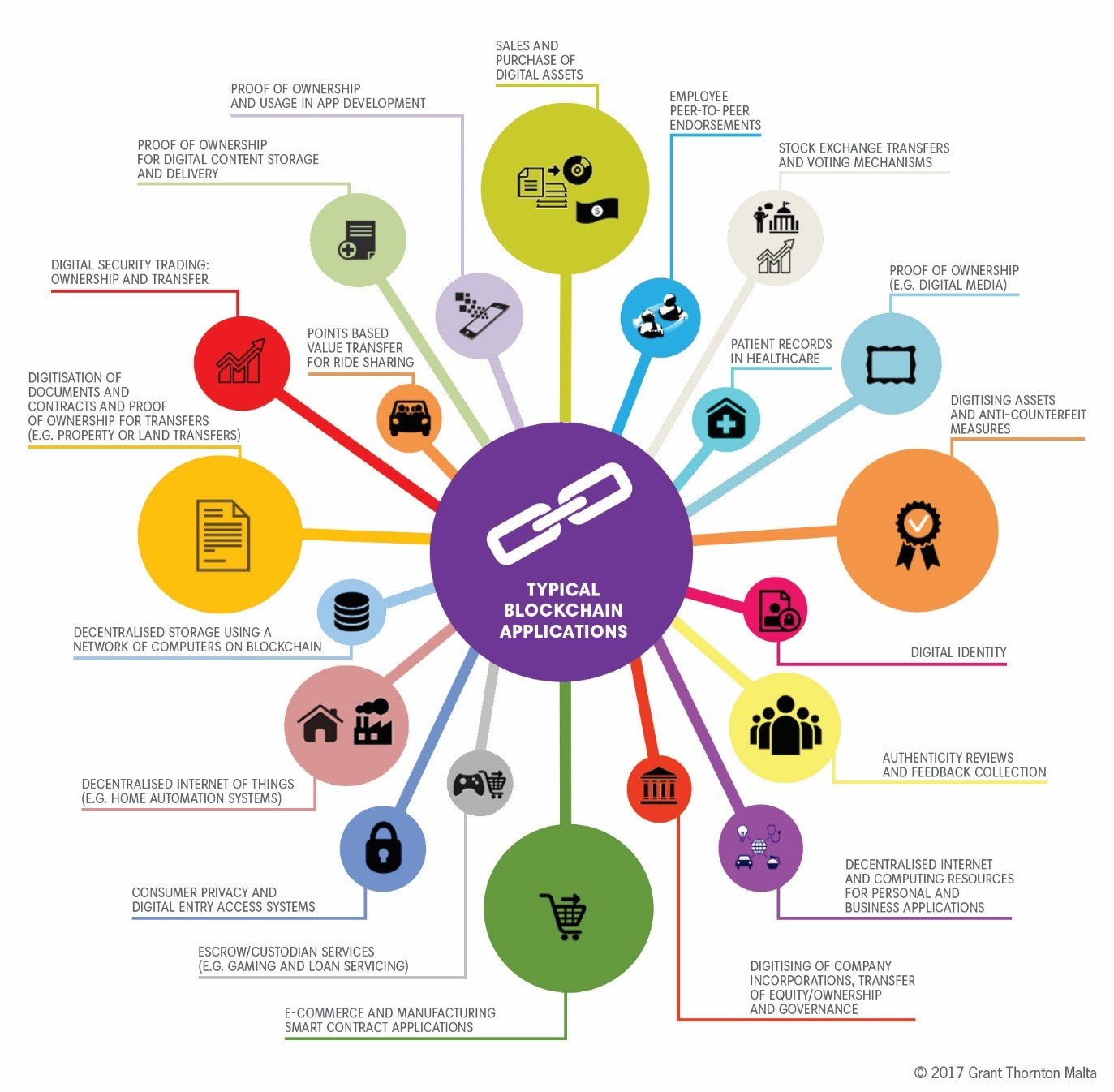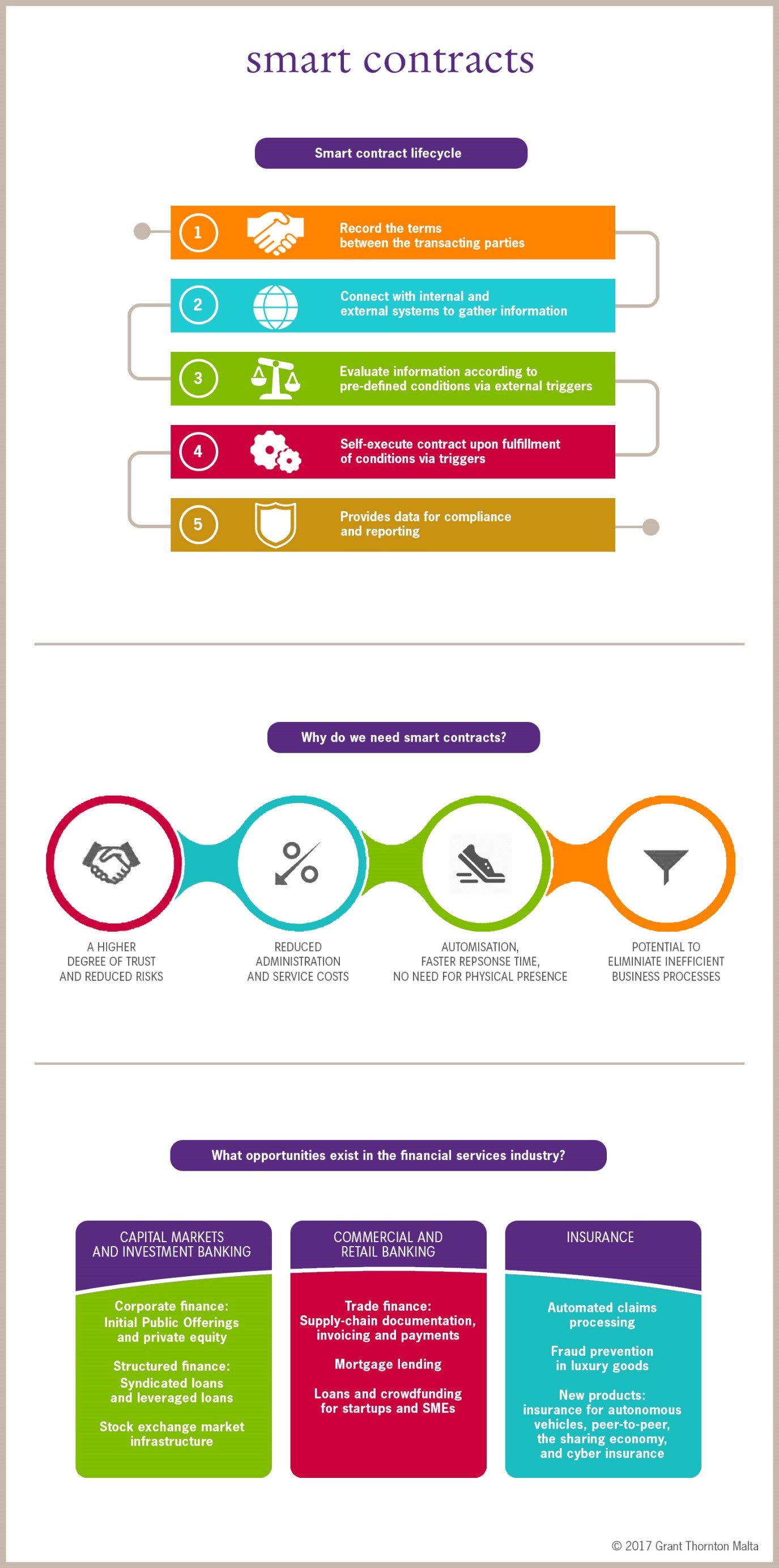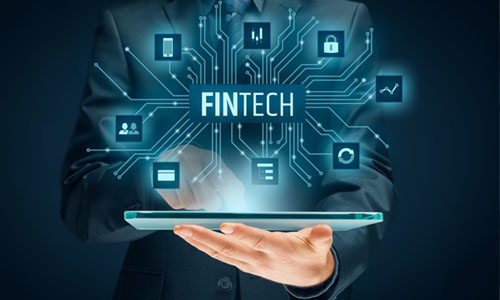-
Financial statements audits
Financial statements audits
-
Financial statement reviews
Financial statement reviews
-
Financial statements compilations
Financial statements compilations
-
IFRS
IFRS
-
Audit quality monitoring
Audit quality monitoring
-
Global audit technology
Global audit technology
-
Systems and risk assurance
Systems and risk assurance
-
General business consulting
General business consulting
-
Market research
Market research
-
Sustainability
Sustainability is indeed a broad concept. Aside from mitigating the environmental changes caused by the interaction of the industrial world and society with nature, social and governance matters are subjected to increased public and government scrutiny, calling for the promotion of a sustainable performance agenda.
-
Business planning and performance improvement
Business planning and performance improvement
-
Change and program management
Change and program management
-
Business intelligence and analytics
Business intelligence and analytics
-
Business valuation and litigation support
Business valuation and litigation support
-
Business process outsourcing and consulting
Business process outsourcing and consulting
-
Family business consulting
Our business solutions for family businesses center on alignment of all aspects of the family and business, including culture, vision, mission, values, governance, ownership, leadership, communication and policy development.
-
Quantitative small caps
Grant Thornton has a wide professional network with a vast array of technical skills that is coupled with a drive to understand the business problem; we can set up the most efficient financial risk management structure that fits your underlying business structure and your risk appetite.
-
Data analytics
Data analytics is the process through which businesses leverage data to gain actionable insights and enhance their performance. This is based on a solid foundation of well-organised and accurate data. Many businesses have a large amount of data at their disposal however, most of them do not have the expertise to analyse the available data.
-
Bookkeeping & financial accounting
Bookkeeping & financial accounting
-
Payroll and personnel administration
Payroll and personnel administration
-
Direct and Indirect tax compliance
Tax compliance within outsourcing
-
Compilation of financial statements
Compilation of financial statements
-
Business process outsourcing
Business process outsourcing including back office and secretarial
-
Family business consulting
Family business consulting
-
Startups
Startups
-
Company formation
Company formation
-
BOR
Entities in Malta, including companies, partnerships, foundations, trusts and associations, have an obligation to disclose the ultimate beneficial owner/s (physical person) of the entities. A beneficial owner is defined as the individual (s) who ultimately owns or controls a legal entity or arrangement through direct or indirect ownership of a sufficient percentage of the shares or voting rights or ownership interest in that entity.
-
Internal audit
Internal audit
-
Risk management and internal controls consulting
Risk management and internal controls consulting
-
Governance and risk management
Governance and risk management
-
Regulatory services
Regulatory services
-
Risk modelling services
Risk modelling services
-
Forensic and investigation
Forensic and investigation
-
Compliance audit
A compliance audit is a detailed review which focuses on whether an organisation is in conformity with statutory laws as well as internal rules and decisions. This type of audit also assesses the effectiveness of an organization’s internal controls by identifying weaknesses in compliance processes whilst finding measures to enhance such processes.
-
Citizenship by naturalisation
The Maltese Citizenship Act (Cap 188) establishes who may become a citizen of Malta by naturalisation, provided that the applicant satisfies the relative provisions.
-
Citizenship for Exceptional Services by Direct Investment
With the continuously changing global dynamics and evolving geopolitics, there is an ever-growing number of highly-talented high-net-worth individuals who are willing to invest and relocate to give themselves and their family members the chance to broaden their horizons and become part of a welcoming community.
-
Grant of Citizenship for Exceptional Services
Malta has enacted legislation which extends to individuals providing excellent or manifestly superior contributions in the fields of science, research, sports, arts and culture as well as people of exceptional interest to the Republic of Malta, the right to become Maltese citizens.
-
Acquisition of citizenship by registration
The Maltese Citizenship Act (Cap 188) establishes who can register as a citizens of Malta. The Act was amended on 1st August 2007, this making it possible for second and subsequent generations born abroad to acquire Maltese citizenship by registration.
-
Maltese Family Businesses Resource Centre
For over 30 years Grant Thornton’s advisory teams have assisted family businesses in navigating the challenges of leadership and succession across generations
-
Grooming
Preparing the next generation for leadership and ownership is an integral part of any succession process. Grant Thornton can help formulate the necessary grooming plan for all the potential successors.
-
Tax services
Using a combination of reason and instinct, we can work with clients to develop a strategy that helps them understand and manage their tax liability in a transparent and ethical way.
-
Governance
Having a proper governance structure is essential to ensure that the family and business strategies are achieved. Grant Thornton can advise on this, and facilitate the implementation of the ideal governance structure based on the exact scenario.
-
Ownership succession
Letting go of your family business is difficult for all owners and even more so for founders; however, in a family business the additional challenge presented by the family component increases the complexity of this process. Our team of family business advisors will ensure that such ownership issues are dealt with in an effective and structured approach.
-
Exit strategies
There are many 'exit strategies' that need to be considered to minimise the risk of conflict. They can arise from the eventual exit of a family member from the ownership ranks and can have many causes. See how we can help.
-
Management succession
By implementing our family business guidelines to family succession and a proper governance structure, the management succession process can be completed with minimal conflict and will result in the most competent successor being chosen.
-
Shaping Malta's Future: GenAI
Join our exclusive GenAI Design Thinking Workshop with Microsoft and industry leaders. Gain practical insights, explore real-world AI use cases, and leave with a blueprint for your next AI-driven innovation - potentially 100% funded by Microsoft!
-
DORA Consultancy
Firms within the financial sector face a critical imperative to fortify their operational resilience in the digital sphere. Get ahead & prepare for DORA!
-
Cyber security Consultancy
Whether you are a multinational corporation, a small business, or an individual, the digital realm holds equal importance for us all.
-
Digital Transformation
Build a solid foundation to fuel business reinvention and gain the flexibility you need to succeed through digital transformation.
-
IT Audit and Assurance
Information systems procedures have evolved drastically, but so have hacking techniques. Assess your IT resilience & protect your firm!
-
Fintech and Innovation
Are you ready to explore the fintech space? Grant Thornton is able to guide you from start to finish.
-
Case Studies
Digital transformation has transitioned from being an option to a necessity. The race is on... The question is, are you ready?
-
Operational and financial restructuring and reorganisation
Operational and financial restructuring and reorganisation
-
Recovery
Recovery
-
Financial regulatory services
Financial regulatory services
-
GDPR consultancy
The General Data Protection Regulations (GDPR) have transformed the way we handle personal data. This regulation is a game-changer for businesses operating within the EU, or the handling of EU citizens' data worldwide.
-
Ship and aircraft registration
Ship and aircraft registration
-
Medical cannabis licensing in Malta
A study published in 2018 by market intelligence and strategic consultancy firm Prohibition Partners, has forecasted that the European cannabis market will be valued €115.7 billion by 2028. According to the same study, while patient numbers are currently below 100,000 across the region, their number is set to grow to over 30 million in the next decade. In 2018 Malta introduced a bill to legalise the use of medical marijuana and attract companies willing to produce high-grade medical cannabis for the European market.
-
Trust and trustee services
As an entrepreneur, business owner, parent or guardian, you will want to ensure that whatever happens in the future, the rewards from your hard work can be protected as efficiently as possible. Grant Thornton Fiduciaire Limited (Grant Thornton) understands this and provides a professional and holistic trust management service.
-
Family trusts
The law establishes the requirement of a license for one to be able to act as a trustee subject to certain limited exceptions. One such exception is found in the Rules for Trustees of Family Trusts which provide for an exception to this rule where a trust is set up to hold property settled by a settlor or settlors for the present and future needs of family members or of family dependants who are clearly identifiable.
-
Programmes
Grant Thornton is authorised and regulated by the Government of Malta to handle and submit applications for both citizenship applications as well as residence permits under the various residence programmes available in terms of Maltese law.
-
Ordinary residency in Malta
Any EU, EEA or third country national who resides in Malta for more than 3 months is obliged to apply for a Residence Permit. There are various grounds upon which an applicant may apply to require a residence permit, including: Self-Sufficiency, Employment or Self-Employment, Family Members, Permanent Residence, Study Purposes.
-
Qualifying Employment in Aviation Rule
Malta provides qualified persons employed in the field of aviation with an opportunity to enjoy a 15% flat personal tax rate on income generated from their direct employment in Malta. For a candidate to qualify, their annual income must exceed €45,000. This does not include the value of fringe benefits and applies to the derived income received from an eligible office.
-
Qualifying Employment in Innovation and Creativity (Personal Tax) (Amendment) Rules, 2019
These Rules allows persons employed in a role directly engaged in carrying out, or management of research, development, design, analytical or innovation activities, to enjoy a 15% flat personal tax rate on income generated from their direct employment in Malta.
-
Qualifying Employment in Maritime and Offshore Oil & Gas Industry Rule
Malta provides qualified persons employed in the field of aviation, with an opportunity to enjoy a 15% flat personal tax rate on income generated from their direct employment in Malta.
-
Nomad Residence Permit
The NOMAD residence permit, which was launched in June 2021, allows third-country nationals who would normally require a Visa to travel to Malta, to retain their current employment based in another country whilst legally residing on the island.

-
Direct international tax
Direct international tax
-
Indirect international tax
Indirect international tax
-
Global mobility services
Global mobility services
-
Transfer pricing
Transfer pricing
-
Estate planning
Estate planning
-
Wealth advisory
Wealth advisory
-
Regulatory and legal
Regulatory and legal
-
Corporate tax services
Corporate services
-
VAT
At its simplest, VAT is a tax on consumption and is a multi-stage tax (ie applied at every stage of the production process), which is applied to both goods (ie tangible property) and services. Additionally, although the tax is ultimately borne by the consumer (by getting included in the price paid), responsibility for charging, collecting and passing the tax on to the tax authorities, rests with the supplier.
-
2018 Amendments of the Income Tax Act
The following is a brief overview of the new tax provisions introduced in 2018 by the Budget Implementation Act (Act VII of 2018) and other legislative enactments
-
Mergers and acquisitions
Mergers and acquisitions
-
ESEF Reporting
Our ESEF reporting service is tailored to assist listed companies in complying with the European Single Electronic Format (ESEF) requirements. As of 2020, ESEF is mandated for annual financial reports of issuers with securities listed on regulated markets. We provide services for mapping the taxonomy and generating audit/regulator-ready xHTML reports.
-
Prospects MTF
As of 2016, small and medium-sized enterprises in Malta can access the capital markets through Prospects - a market of the Malta Stock Exchange (MSE) designed specifically for Small and Medium sized Enterprises (SME). Prospects offers a cost-effective opportunity for entities looking to raise up to €5 million per issue.
-
Project financing
Project financing
-
Due diligence
Due diligence
-
Valuations
Valuations
-
Foreign direct investment
Foreign direct investment (FDI) is the category of international investment that echoes the objective of obtaining a lasting interest by an investor in one economy in an enterprise resident in another economy.
-
Wholesale Securities Market
WSM is a joint venture between the Malta Stock Exchange and the Irish Stock Exchange, combining the best of each partner’s processes and technical skills.
-
Aviation
The Maltese Government is constantly remaining to improve the position as the best place to do business within the aviation industry through exhaustive tax agreements, powerful legislation, and many aviation professionals. This is the best time for airlines, financiers and aircraft owners to be located in Malta.
-
Maritime
For Maritime, Grant Thornton provide direction with regards to VAT guidelines for yacht leasing, as well as ship and aircraft registration.
-
Automotive
We offer a broad range of services relating to automotive, ranging from Transaction advisory, access to finance, business advisory, process and inventory management, tax advisory, audit and advisory, outsourced support services.
-
Gaming Regulations
Malta recently overhauled the framework regulating the iGaming sector. Going forward operators will still be required to obtain authorisation to carry out regulated activities.
-
Licensing Process
Prior to submission all applicants are advised to go through a pre-application process with one of the MGA’s Licensing Officers. This will ensure that the application has been correctly compiled and all the key ingredients are present.
-
Malta Real Estate Investment Trust (REIT)
As part of the 2019 budget, the government has pledged to introduce a Real Estate Investment Trust (REIT) framework in Malta.
-
The Markets in Financial Instruments Directive (MiFID) II
MiFID II aims to protect investors and make sure that financial markets operate in the fairest and most transparent way possible. Building on stock and investment trading regulation introduced in 2007 it sets to ensure a more integrated financial market.
-
Fintech and Innovation
At Grant Thornton we help innovative firms and entities operating in the fintech space launch new propositions and grow their business. We also help established businesses transform and take advantage of the fintech revolution.
-
Asset Management
At Grant Thornton we help innovative firms and entities operating in the fintech space launch new propositions and grow their business. We also help established businesses transform and take advantage of the fintech revolution.
-
Banking
Grant Thornton combines local insight with global scale to help banks meet regulatory expectations, improve technology, and finance the right companies. If you’re looking for a partner in the banking industry, our expertise can make a difference
How blockchain could change the financial and legal industries and the world at large.
If someone in 1993 would have said that the Web would be integral to our life today, would you have believed them? After steam, electricity and computing, it is the common creed that blockchain will soon become a symbol of the next industrial revolution. Industry experts proclaim the emerging technology as the next big disruptor, with both geeks and fintechs deep in thought and testing. The question is whether it will be a secret behind the scene transformation for the beneficiary industries, or a loud uprising that will make blockchain the next decade’s buzzword.
Few can however argue that blockchain has had little impact on the financial and legal industries. To the contrary, the degree to which the fintech industry has changed over the last decade due to this disruptive technology is off the scale. The world has witnessed the arrival of new currencies, technologies, business models and forms of transactions; all within an environment of global economic upheavals and increasingly comprehensive regulation. Much more is to follow.
Digitalisation has come in overwhelming waves, driven by the growth of e-commerce – first in the B2C, and now the B2B space – and the proliferation of smart devices and internet of things (IoT). With it has come continuous innovation to meet the demand for technologies that drive efficiency, lower transaction costs and boost convenience. Innovative and nimble new players, particularly fintechs and digital ecosystems, have entered the payments and transactions game, creating increased competition for traditional banks and financial institutions.
The European Union is also taking a keen interest in Blockchain. Testament to this is the July 2016 EC report “Opportunity Now: Europe’s Mission to Innovate,” by Robert Madelin, Senior Adviser for Innovation to EU President Jean-Claude Juncker. The 346-page document highlights blockchain as a fundamental sphere to turn Europe into an innovation leader by creating an environment that spurs the development of stable, safe and reliable blockchain applications in product and service markets through regulatory and commercial competition.
Madelin believes that this will “lead to innovative business models that will broaden the spectrum of innovation beyond pure technological innovation, as they foster process, service and organisational innovation as well.”
What is blockchain technology?
For several decades we have thought of the Internet as a straight exchange of information. Varying assets – ranging from intellectual property to music, from money to publishing, from property deeds to health records – are all controlled by large intermediaries that handle the major processes involved in any one of many transactions. Practical examples include banks transferring money between individuals, businesses and countries, and social media companies holding onto giant depositories of data, video and music streaming services.
There are many transactions involved, both individually and institutionally, that include everything from authenticating, clearing, processing and bookkeeping. But these intermediaries are far from perfect and one of their biggest flaws is centralisation.
They are also slow and take a reasonably large cut from any of the businesses in these value exchanges. The idea behind blockchain is to do away with such centralised transaction systems and offer an alternative that is accessible, easily applicable and more secure.
Blockchain technology’s potential lies in its ability to create a distributed ledger of transactions, of which all participants have an identical copy that can be accessed and viewed in real-time. It can be technically defined as “a distributed, decentralised database technology that maintains a growing list of transactions and, through encryption and other activity, verifies their permanence.” It means that every participant in the process can manipulate the ledger securely and without the need for a central authority, because they all see it simultaneously.
To really get blockchain explained, one can break the system down into its three most important parts: a network of computers/participants, a network protocol and a consensus mechanism.
Depending on the permissions of the blockchain, it can be public, and open to anyone with a computer, or private, accessible only by specific members. Each computer is called a node, and it makes up one part of the network of participants in the blockchain.
A network protocol is, in plain English, a rule book that determines how those nodes can talk to each other. Typically, each node has its own copy of the general ledger (the blockchain) so there’s protection against mistakes or fraud. That redundancy, called “fault tolerance,” is what makes blockchain unique.
The consensus mechanism is the process by which a blockchain network verifies transactions and comes to an agreement on what the current, accurate blockchain is. Such rules are agreed upon beforehand by every node in the network—they’re a defining feature of the network. Anyone, individually, can check the validity of each transaction and come to a conclusion on whether it’s good or not. Since anybody can securely check any proposed transaction against this shared ledger, this approach permits participants to have confidence in the integrity of any single entity.
Public blockchain networks tend to have pretty high standards for security, while private networks might be a little more trusting. But either way, the rules that form the consensus mechanism are what gives blockchain technology its flexibility and power.
Understanding how the system works is complex, but one should be more interested in its application and benefits.
Bitcoin and digital currencies
One of the first implementations of blockchain was Bitcoin followed by a number of other cryptocurrencies – but none as widespread to date. Bitcoin made its debut in relative obscurity at the start of 2009, when the financial crisis was still raging. The bitcoin protocol and reference software was created by a person or group of persons known as Satoshi Nakamoto and released as open-source software. The idea was to take power out of the hands of the central bankers and governments who usually control the flow of currency.
Bitcoin and similar digital currencies operate through the setting of distributed ledgers that allow individuals to exchange electronic money securely without necessarily having the transactions settled centrally through a bank. Such level of decentralisation ensures that no single institution controls the bitcoin network. Cryptocurrencies also ensure great transparency, since the history and details of every single transaction that ever happened in the network is stored and can be traced back to the point where the digital currency was produced.
What’s not great about cryptocurrencies? Over the past years, we have seen that these exchanges can be vulnerable to hacking, though the latest methods have seen a very strong improvement in terms of security. The fact that cryptocurrency allows a fair level of anonymity for the account holders isn’t a selling point for authorities either.
Some argue that being relatively unregulated, cryptocurrencies, with bitcoin in particular, could potentially be at the heart of illegal activities, including tax evasion or money laundering. The new EU Anti-Money Laundering Directives (AMLD) which are currently being finalised are meant to conciliate such concerns and clamp down on illegalities.
This will also be enforced by the EU’s action plan to strengthen the fight against terrorist financing, through which the Commission is proposing to bring anonymous currency exchanges under the control of competent authorities by extending the scope of the AMLD to include virtual currency exchange platforms and have them supervised under Anti-Money Laundering/countering terrorist financing legislation at a national level.
Blockchain applications
A broad range of innovators are creating solutions beyond cryptocurrencies using blockchain technology.
Digital content like music, movies, and online ads could use blockchain to prevent piracy. By using new file formats that can play the media and encode blockchain data that reflects intellectual property and payment history, musicians and filmmakers wouldn’t be losing out on millions.
Looking at healthcare, Blockchain technology has the potential to transform health care, placing the patient at the centre of the health care ecosystem and increasing the security, privacy, and interoperability of health data. In medicine, blockchain technology is being used in the US and Estonia to prevent the theft of pills through the supply chain and give medical history ownership back to patients - who can distribute it to their doctors, for certain amounts of time, as they want or need. In the health sector, blockchain is being considered as a solution to the counterfeiting of drugs.
In the food and drink industry, farmers could use blockchain to monitor their crops—and trace where and when food recalls occur.

Disrupting the legal and financial world
Blockchain will also alter the legal landscape primarily through its use for smart contracts - self-executing contractual states, stored on the blockchain, which nobody controls and which are immutable - and therefore everyone can trust. Smart contracts can be pre-programmed with the ability to self-execute and self-enforce themselves.
Identifiable legal industries that are seeing an active use of blockchain technology and smart contracts include IP, land registry and deed management. Some Latin American countries, for example, have already begun to use blockchain as a means to keep track of who owns which land deeds.
Several law firms have also started to make a foray into the blockchain space. Recently Steptoe & Johnson, a US legal firm, began a multi-disciplinarian practice to help manage the blockchain for clients. They will also be accepting Bitcoin as payment. Most importantly, they co-founded the Blockchain Alliance, a coalition of 25 blockchain companies and 25 regulatory and law enforcement agencies — including Interpol, Europol, the Securities and Exchange Commission (SEC) and the FBI — to educate enforcement agencies about digital currencies and blockchain technology.
In some African countries they are looking at using blockchain technology to keep census information. Voter records could also be added to this process as a means to have a central repository of eligible citizens. In this area, which is currently under development, blockchain seems primed for tremendous growth.
What about blockchain applications within the financial world?
Whilst digital currency applications are the best known to date, banks and financial services are using blockchain to cut out the middlemen, save time and money, whilst reducing risk when dealing with monetary transactions.
The potential of blockchain is so powerful that nine major banks, including JP Morgan and Goldman Sachs, have joined partnership with one another to invest and develop the technology. Santander estimates that blockchain can save banks up to $20 billion a year in infrastructure costs by eliminating central authorities and bypassing slow, expensive payment networks.
The insurance industry could also dramatically change. The sector is employing blockchain technology when registering luxury assets to help prevent theft and fraud. One project - which involves Interpol, insurers and diamond distributors - is working to stem the flow of ‘blood diamonds’ into the precious-stones market. Another project is looking into the use of blockchain to provide the opportunity for individuals to get insurance that lasts for a few hours, such as sports insurance.
Completely unrelated, Uber drivers are looking into bypassing insurance companies by combining their money together on a blockchain and creating a safety net for themselves. Fraudulent claims, manual processes, fragmented data sources, policies for one user sitting in silo and legacy underwriting models are some of the biggest challenges experienced in the insurance sector today – all causing low customer satisfaction.
Creating policies as smart contracts on the blockchain is an ideal use case for insurance. It offers complete control, transparency and traceability for each claim and could lead to automatic pay-outs. Blockchain technology would also improve risk modelling for the sector, break down the existing silos and significantly reduce fraudulent claims by capturing the origin and ownership of diamonds, paintings, homes, cars and other assets to be insured.
Blockchain and asset management
Asset management will also be a key beneficiary of the blockchain. Traditional trade processes within asset management can be slow, manual, cumbersome and filled with risk when reconciling and matching – and they’re getting more complex with cross-border transactions and for non-standard investment products, such as loans. Each party in the trade lifecycle (e.g. broker-dealers, intermediaries, custodians, clearing and settlement teams) currently keeps their own copy of the same record of a transaction, creating significant inefficiencies and room for error.
Blockchain technology simplifies and streamlines this entire process, providing an automated trade lifecycle where all parties in the transaction would have access to the exact same data about a trade. This would lead to substantial infrastructural cost savings, effective data management and transparency, faster processing cycles, minimal reconciliation and the potential removal of brokers and intermediaries altogether.
Blockchain technology also has infinite potential when it comes to clearing and settlement in the capital market space, with applications by stock exchanges where blockchain technology allows them to reconcile, settle and pay out dividends based on the stock ownership by people and by organisations that are already in place.
The accountancy world will not go untouched. Accountants do a lot of transaction processing, reconciliation and control, and that could change significantly if this technology gets adopted on a widespread basis. The cost savings that financial institutions are looking at are huge, and most of that saving will come from people who do the back office. Be it accountants or ledgers, there’s a degree of challenge to those in the accounting profession who work in finance functions.
The nature of auditing could also change, by removing some of the more transactional and checking parts of the role. Blockchain could provide a third validation point which does not exist so far. With blockchain technology validation could be provided independently, potentially by an independent network validating transactions that have been recorded on the blockchain. The role of audit could move further up in the value chain, into providing more of a governance role around the various types of blockchains that are going to be used.










